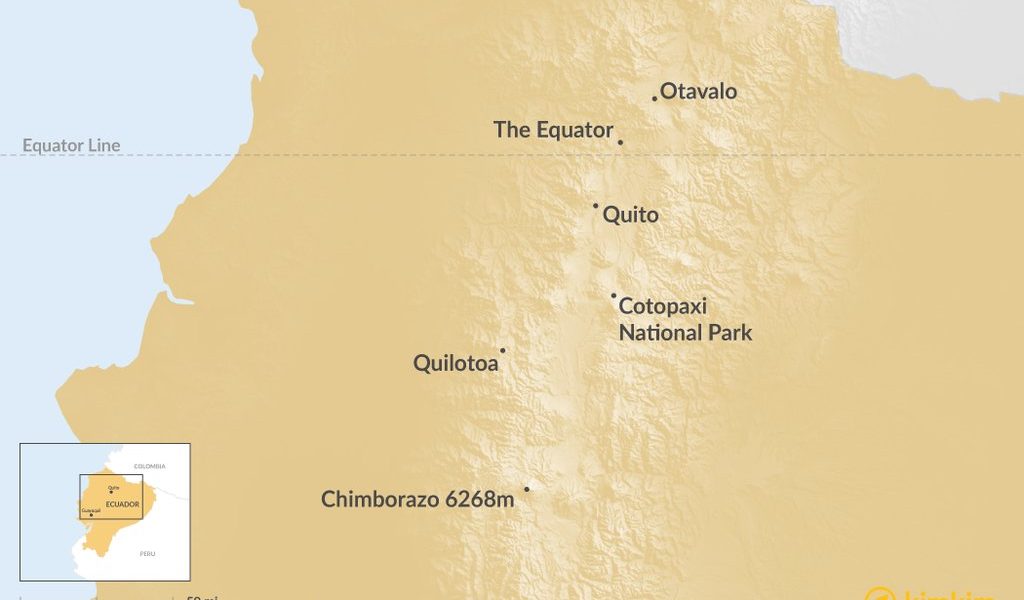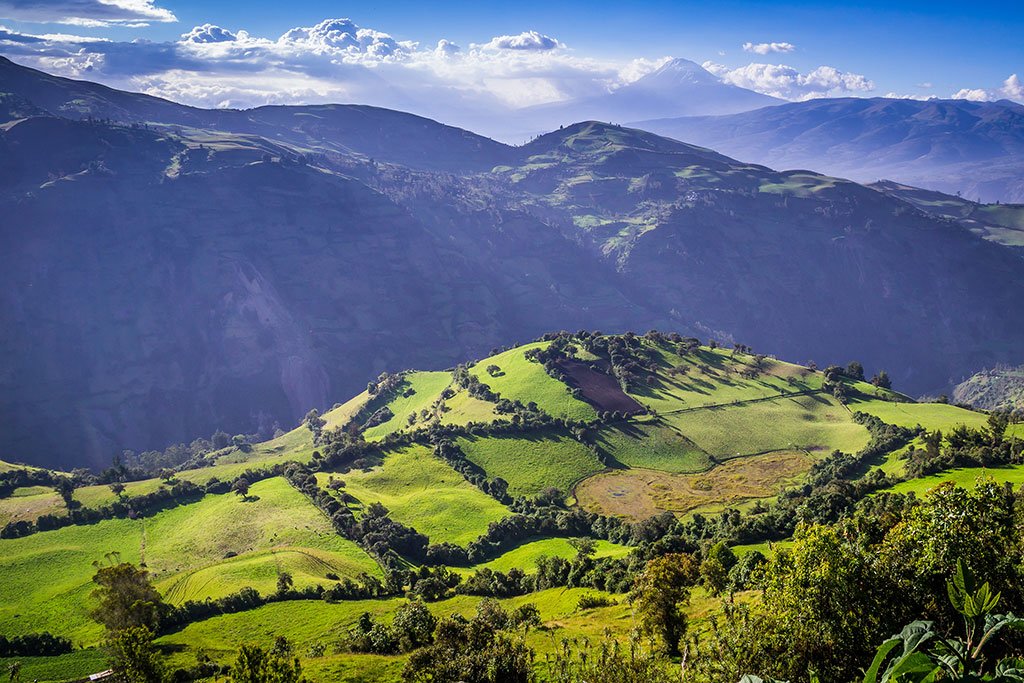
The Avenue of the Volcanoes. The Roof of the World. For centuries, natives and travelers alike have found inspiration in the chain of immense volcanoes that form the Ecuadorian Andes. With rich Andean culture and awe-inspiring views, you’ll learn what is so special about mountain life along the equator.
## A Deep Dive into the Ecuadorian Andes: Unveiling Nature’s Majesty and Cultural Riches
Overview map
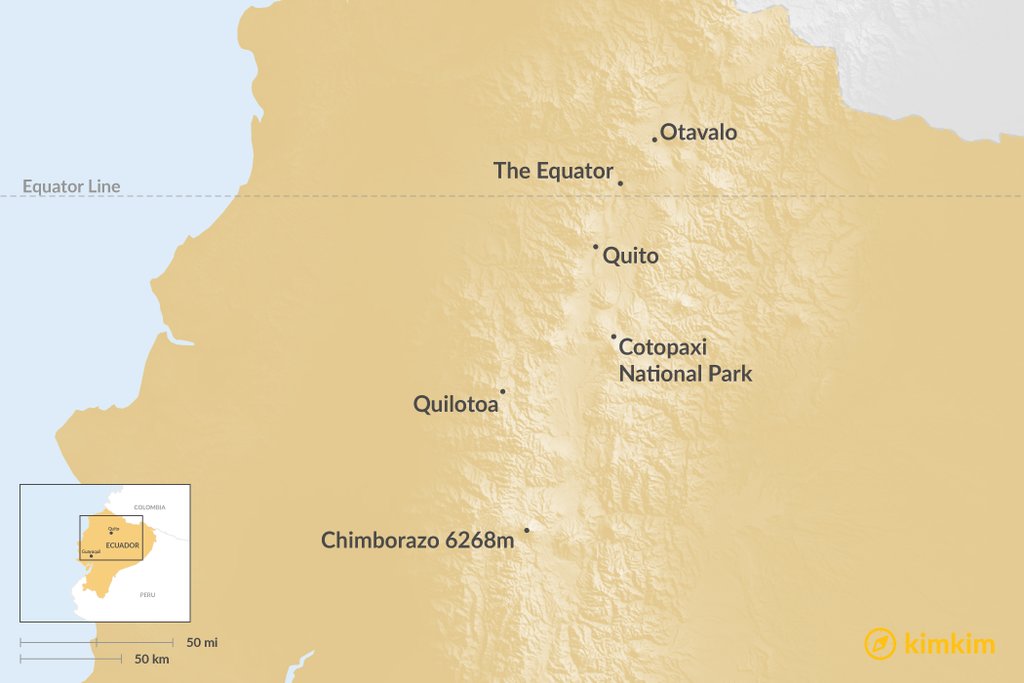
Around Quito
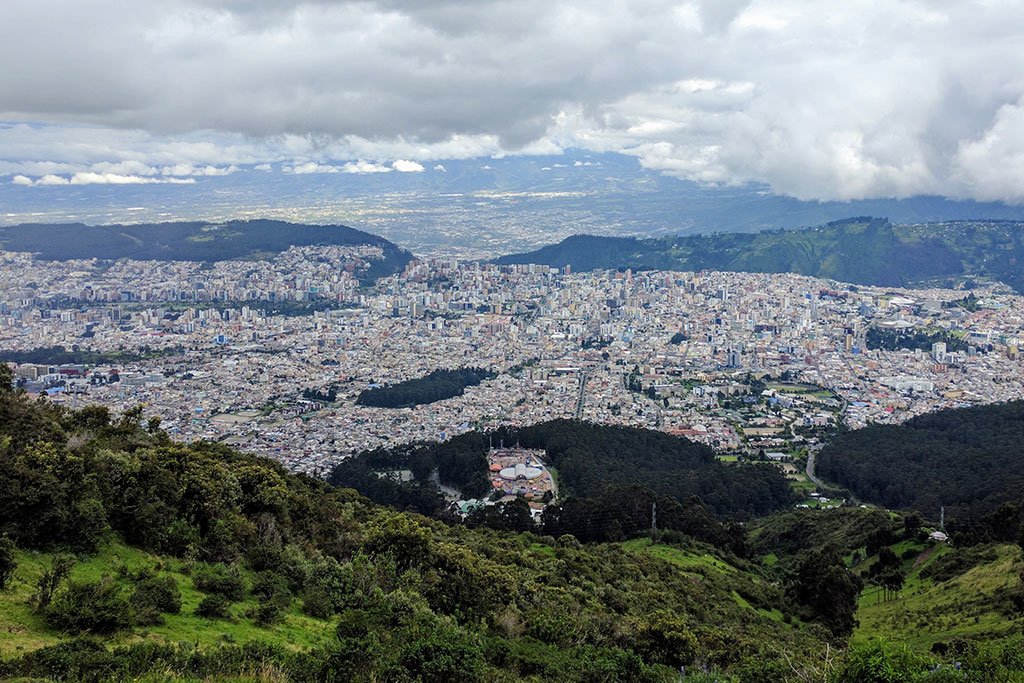
Your adventure through the breathtaking Ecuadorian Andes inevitably begins in Quito, the country’s vibrant capital city. Nestled high in the mountains at an impressive 2850 meters (9,350 feet) above sea level, Quito offers a unique blend of historical charm and modern energy. Allow at least a full day, if not more, to immerse yourself in its remarkably well-preserved colonial zone. This area stands as a testament to the rich history of the region, boasting the largest colonial zone in all of the Americas. It was rightfully recognized as the first UNESCO World Heritage site, solidifying its importance on a global scale. Walking through its cobblestone streets is like stepping back in time, offering glimpses into a bygone era.
No visit to Quito is complete without indulging in the local culinary delights. Head to the bustling central market and seek out a plate of llapingachos, the quintessential Ecuadorian potato pancakes. These savory treats are a must-try, offering a flavorful taste of the Andes. While you’re there, soak in the vibrant atmosphere of the market, observing the constant flow of people buying and selling a dazzling array of fresh produce. From colorful fruits and fragrant flowers to a diverse selection of vegetables and, of course, countless varieties of potatoes, the market is a feast for the senses. Speaking of potatoes, did you know that this humble root vegetable has been a dietary staple in this part of the Andes for over 8000 years? This fascinating fact highlights the deep-rooted connection between the land and its people.
For panoramic views of Quito and the surrounding volcanic landscape, take a memorable gondola ride up the slopes of nearby Volcán Pichincha. As you ascend, the city shrinks below, and the majestic peaks of the Andes come into view. For the more adventurous and physically fit traveler, consider tackling the trails that lead all the way to Volcán Pichincha’s impressive 4784-meter (15,696-foot) peak. This rewarding climb provides an unparalleled opportunity to immerse yourself in the unique Paramó ecosystem, the high-altitude Andean highlands characterized by its distinctive flora and fauna. The Volcán Pichincha ascent represents one of the most accessible ways to experience this remarkable environment firsthand.
Cotopaxi National Park
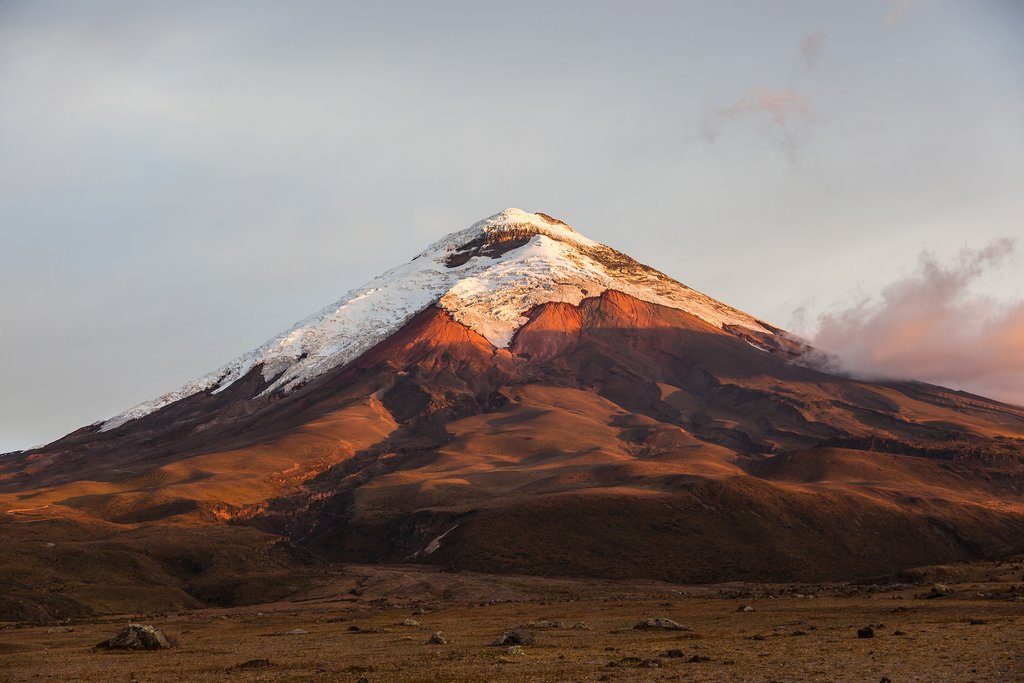
Dominated by the imposing presence of Volcán Cotopaxi, Cotopaxi National Park stands as a testament to the raw beauty and untamed power of the Andes. Volcán Cotopaxi, the park’s namesake, is not only a defining feature of the landscape but also one of the highest active volcanoes on our planet. Even from afar, the sheer scale and majesty of this white giant are awe-inspiring. Its perfectly symmetrical slopes rise dramatically from the surrounding highlands, culminating in a 5897-meter (19,347-foot) peak that can be seen all the way from the distant city of Quito. It’s impossible not to be captivated by the beauty and the undeniable force of nature that Volcán Cotopaxi represents.
Within the boundaries of Cotopaxi National Park, you’ll find a collection of charming haciendas, many of which offer guided tours to the refuge located at the base of Cotopaxi’s magnificent glacier. For a truly unforgettable experience, seek out tours that include mountain bike rentals, allowing you to embark on a thrilling and adrenaline-fueled ride down the volcano’s slopes. Please note that due to safety concerns, the Ecuadorian government has prohibited any summit attempts on Volcán Cotopaxi since June 2015. However, fear not, aspiring mountaineers! The park is home to several other volcanoes that offer excellent trekking opportunities for those seeking to conquer some Ecuadorian summits. Nearby Rumanahui, standing at 4721 meters (15,489 feet), Pasochoa, reaching 4200 meters (13,780 feet), and Corazón, towering at 4790 meters (15,715 feet), are all readily accessible via well-maintained trails, beckoning adventurous souls to explore their heights.
Chimborazo
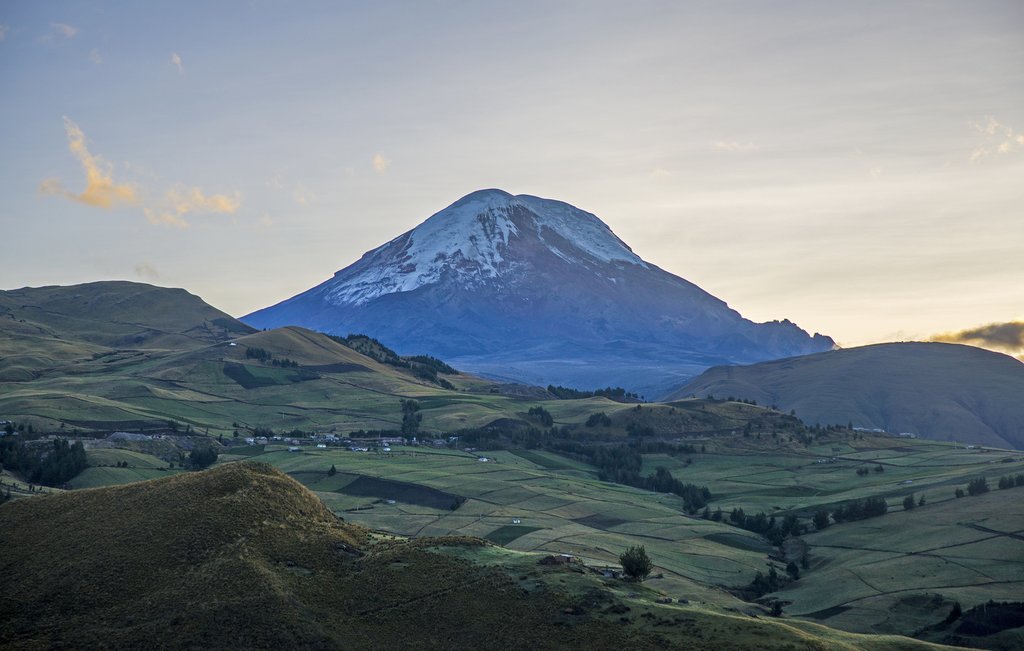
Journey south from Cotopaxi National Park, and you’ll encounter Volcán Chimborazo, the undisputed king of Ecuadorian volcanoes. Not only is it the tallest volcano in Ecuador, but it also holds the distinction of being the closest point to the sun on the entire planet. This unique claim is due to the Earth’s equatorial bulge, which places Chimborazo’s summit further out into space than the peak of Mount Everest. Venture into the arid highland climate that surrounds its base and keep an eye out for flocks of vicuña, the wild and graceful cousins of the llama, as they roam the landscape. For a truly unforgettable experience, consider spending a night in Ecuador’s highest alpine refuge, perched at a staggering 5000 meters (16,404 feet). There, you can sip warming coca tea, share stories with fellow travelers by candlelight, and marvel at the star-studded Andean sky.
Not far from Chimborazo lies the historic town of Riobamba. This city once stood as a strong contender for the capital of Ecuador, and it was here, in 1830, that the nation’s first constitution was drafted. Today, Riobamba is perhaps better known as the capital of torero, or bullfighting, culture in Ecuador. While its charming and well-maintained old zone may be smaller than Quito’s, it possesses a unique liveliness and energy all its own. Many of the city’s best bars and restaurants are conveniently located near the old train station, making it easy to explore the local culinary scene.
The Riobamba train station also serves as a gateway to the small town of Alousí, the starting point for one of the most breathtaking rail journeys in all of South America. Hop aboard the dedicated tourist train to Nariz del Diablo, also known as the Devil’s Nose, and prepare to be amazed by the incredible feat of engineering and the stunning natural beauty that unfolds before you. This serpentine railway winds its way through Ecuador’s high alpine valleys, offering panoramic views of dramatic landscapes and a truly unforgettable travel experience. The Devil’s Nose is an exhilarating adventure for the senses.
Quilotoa
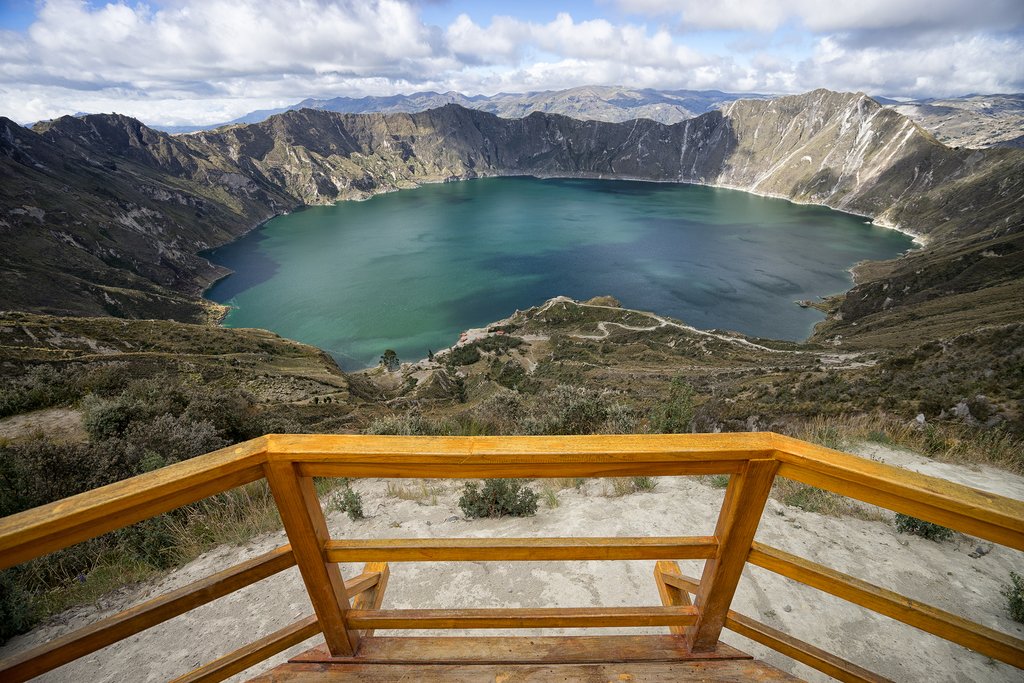
Imagine a scene from millennia past: a supermassive volcanic eruption rocks the earth, causing an ancient volcano to collapse in on itself, forming a deep and dramatic crater. Fast forward 800 years, and this very crater has transformed into the stunning Laguna Quilotoa, a 250-meter (820-foot) deep lake nestled within the Andes. Today, this breathtaking location attracts visitors from all over the world who hike down to the water’s edge to experience a unique kayak ride on its beautiful, albeit frigid, waters. For those who are more adventurous and possess a good level of physical fitness, consider tackling the challenge of circling the entire upper ring of the crater on the well-marked but dusty trail. This rewarding hike offers unparalleled views of the lake and the surrounding landscape.
The famous Quilotoa Loop presents a remarkable multi-day trekking experience. Whether you choose to journey by donkey or on foot, this adventure takes you through a series of small, traditional indigenous villages. As you traverse this route, you’ll encounter local markets brimming with unique and handcrafted goods. Keep an eye out for vibrant paintings, cozy ponchos, and other souvenirs that are sure to remind you of your travels through this enchanting region of Ecuador. The Quilotoa Loop offers an opportunity to connect with the local culture.
The Equator and Cloud Forests
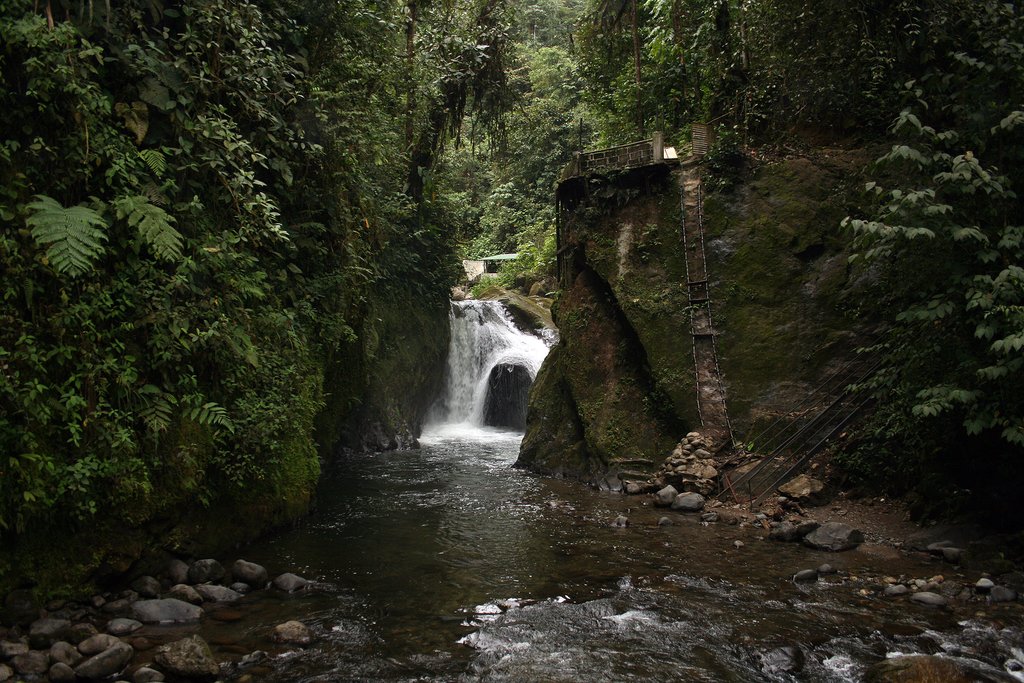
For any tourist journeying north of Quito, a visit to the Mitad del Mundo, or the “Middle of the World,” is an absolute must. This iconic attraction marks the approximate location of the equator and offers a chance to stand with one foot in each hemisphere. The attraction itself is conveniently located right off the highway and is well-signed, making it easy to find. However, a word of caution: the famous tower that marks the 0’0″ latitude line is actually off by approximately 250 meters. To ensure you are truly standing on the true equator, head further up the road to the Inti Nan museum. This interactive museum provides a fascinating glimpse into the science and culture of the equator and allows you to stand precisely on the line that divides the planet in two.
As you continue your journey north on the Panamerican Highway, you’ll witness a dramatic transformation in the landscape. The dry, yellow hues of the highlands gradually give way to lush, vibrant greenery. You are entering the tranquil cloud forests of Ecuador, a biodiversity hotspot teeming with hundreds of thousands of unique species of plants and animals. Orchids, butterflies, and hummingbirds thrive in this misty and magical environment, creating a symphony of color and life.
The charming village of Mindo serves as an ideal home base for those seeking adventure, relaxation, or a delightful combination of both. For the adventurous traveler, Mindo offers a plethora of exciting activities. Embark on a thrilling tubing trip down the rivers that eventually flow into the Amazon, or experience the rush of adrenaline as you bungee jump and zip line through the vine-covered canopies of the cloud forest. For those seeking a more tranquil experience, take a leisurely stroll through the misty trail systems, discovering hidden waterfalls and enjoying the serenity of nature. Swimming and cannonballs are highly encouraged! Afterward, wander through the quiet streets of this picturesque town, chatting with friendly locals and indulging in the artisanal chocolate, coffee, and beer that Mindo has to offer.
Otavalo
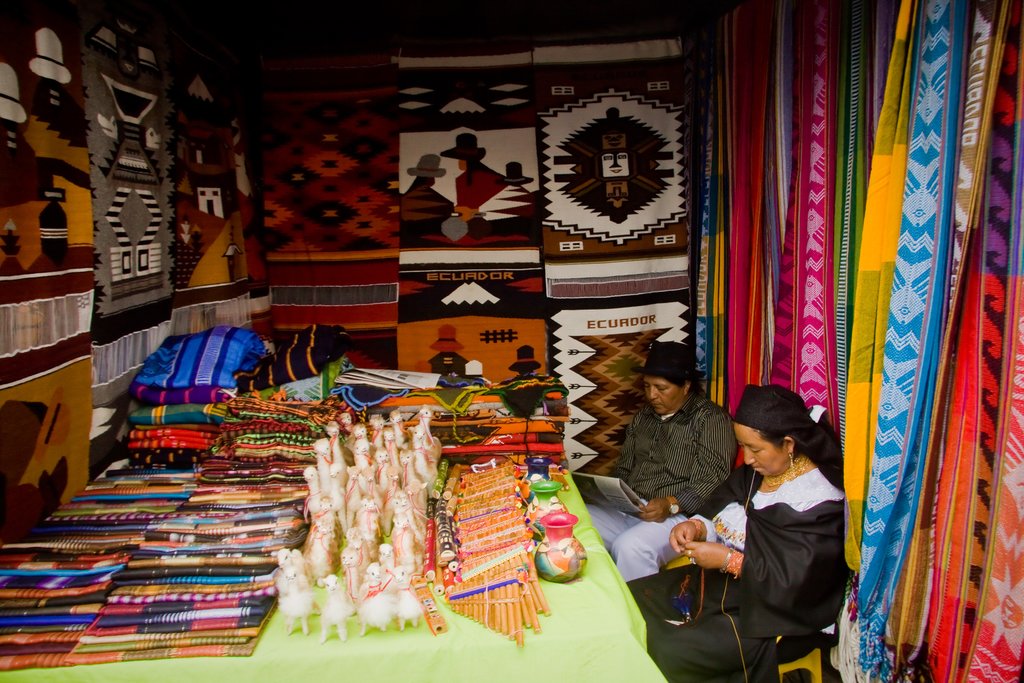
Further north of Quito, you’ll discover the indigenous town of Otavalo, famed as the home of the largest outdoor market in all of Latin America. Every Saturday, the town transforms into a vibrant hub of commerce, with nearly half of the streets taken over by thousands of vendors and their bustling stands. Otavalo’s renowned textiles and wool products can be found in markets across the country, but here, you’ll have the opportunity to sharpen your negotiating skills and take advantage of the lower prices. For a delicious lunch, don’t miss the chance to visit the Shenandoah Pie Shop, a local favorite located in the Plaza de Ponchos.
To beat the crowds of “Quiteños” (residents of Quito) who flock to Otavalo every Saturday, consider spending the night on Friday. A variety of accommodation options cater to every budget, ensuring a comfortable stay. Be sure to wake up early on Saturday morning, around 6 am, and head towards the Panamerican Highway to witness the spectacle of the local animal market. The controlled chaos of farmers and ranchers bartering in their traditional highland clothing creates a scene that feels transported from another time. It is an authentic and unforgettable cultural experience.
The area surrounding Otavalo offers plenty of opportunities for exploration. Buses depart every 10 minutes to the nearby town of Cotacachi, the leather-making capital of Ecuador. Stroll down the main street and you’ll find dozens of shops selling an impressive array of leather goods, from stylish bags and durable boots to fashionable biker jackets and classic riding chaps. You can also easily hail a taxi to visit the stunning high alpine lake of Cuicocha and its picturesque islands, or to the nearby Parque Condor, a dedicated rescue center for injured Andean birds of prey, including the elusive and endangered Andean Condor. The Parque Condor offers a chance to see these magnificent birds up close and learn about the conservation efforts to protect them.
B-718

